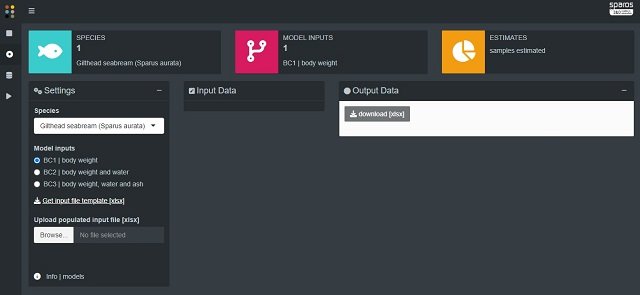
Determining the proximate body composition of fish is an essential aspect commonly recorded in fish nutrition studies and commercial aquaculture activities.
Fish nutrition research often relies on body composition records as a way to estimate nutrient retention, primarily as nutrient requirements, evaluate the nutritional value of ingredients and aquaculture feeds, and quantify wasted nutrients.
Understanding the nutritional profile of fish species such as gilthead seabream (Sparus aurata), European seabass (Dicentrarchus labrax), meagre (Argyrosomus regius), rainbow trout (Onchorhynchus mykiss), Atlantic salmon (Salmo salar), and Nile tilapia (Oreochromis niloticus) is essential for both researchers and fish farmers.
A team of researchers from Sparos Lda., the Institute of Biomedical Sciences Abel Salazar (ICBAS-UP) at the University of Porto, the Centre of Marine Sciences (CCMAR) at the University of Algarve, the University of Murcia, and the University of Bergen present the ficoEst – Fish Composition Estimator tool, a publicly accessible web tool designed to revolutionize how we estimate the approximate body composition of aquaculture species like gilthead seabream, European seabass, meagre, rainbow trout, Atlantic salmon, and Nile tilapia.
The ficoEst Tool
The ficoEst tool is available to anyone interested in fish nutrition, from seasoned researchers to fish farmers. ficoEst employs three different types of mathematical models to estimate fish body composition in terms of crude protein, crude lipids, water, ash, phosphorus, and energy.
Models Included in ficoEst
What sets ficoEst apart are its three distinct mathematical models, each designed to meet specific estimation needs:
- BC1 Models: These models rely solely on body weight as input data to estimate fish body composition.
- BC2 Models: A step ahead, BC2 models incorporate both body weight and water content into their calculations.
- BC3 Models: The most advanced of the trio, BC3 models consider body weight, water content, and ash content as input data.
Precision Matters
A key finding from model evaluation is that BC3 models, with their additional consideration of water and ash content, significantly enhance the accuracy of predictions for certain body composition components, most notably crude lipids. In some cases, BC3 models can be up to 67.9% and 28.1% more accurate compared to BC1 and BC2 models, respectively. The degree of improvement depends on the specific fish species under consideration.
A Complementary Tool
Researchers emphasize that ficoEst is not intended to replace analytical methods for determining fish body composition. Instead, it complements these methods by providing additional information. Researchers and fish farmers can use this web tool to refine their understanding of the nutritional content of farmed fish, enabling better-informed decision-making in aquaculture operations.
Conclusion
As a publicly accessible web tool, ficoEst has the potential to become an invaluable resource for professionals in the fields of aquaculture and fish nutrition. Whether you’re conducting research to optimize fish diets or managing a fish farm, ficoEst provides precise estimations that can enhance the quality and sustainability of your practices.
In a world where precision and data-driven decision-making are increasingly important, ficoEst stands as a testament to the power of technology in improving our understanding of farmed fish composition.
You can access the ficoEst tool here.
This study has been funded by project 47175_FICA, financed by Portugal and the European Union through FEDER/ERDF, COMPETE 2020, and CRESC Algarve 2020.
Contact
Filipe Soares
Sparos Lda.
Área Empresarial de Marim, Lote C
8700-221 Olhão, Portugal
Email: filipesoares@sparos.pt
Reference
Filipe Soares, Andreia Raposo, Rodrigo Mendes, Marina Azevedo, Jorge Dias, Ana Nobre, Luís E.C. Conceição, Tomé Silva. 2023. ficoEst – a tool to estimate the body composition of farmed fish, Aquacultural Engineering, Volume 103, 2023, 102364, ISSN 0144-8609, https://doi.org/10.1016/j.aquaeng.2023.102364.

